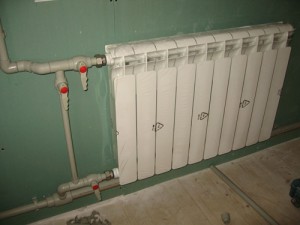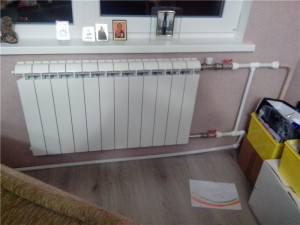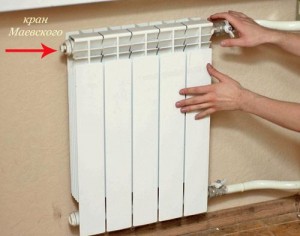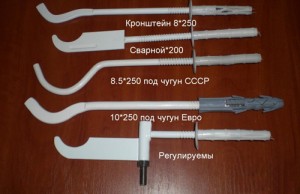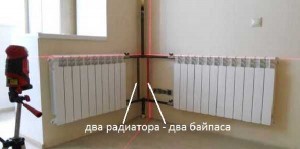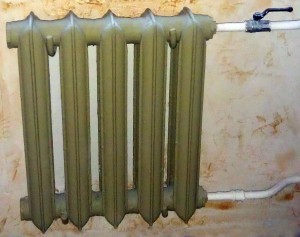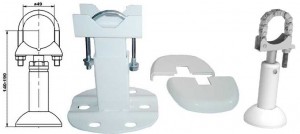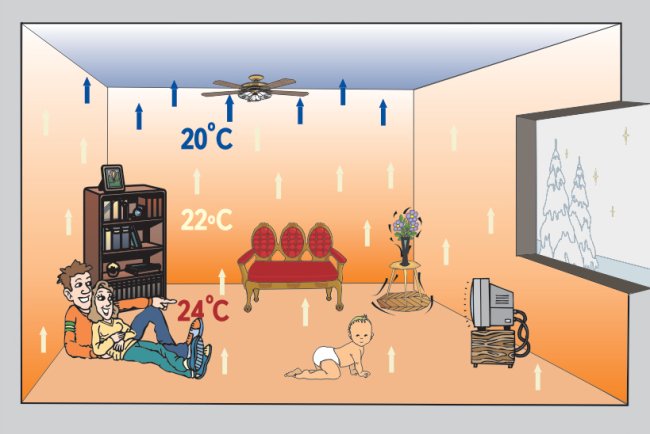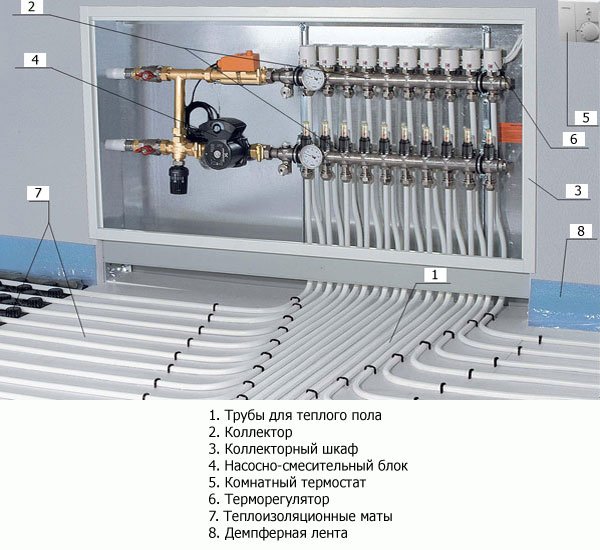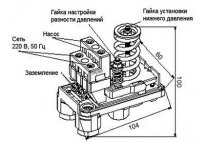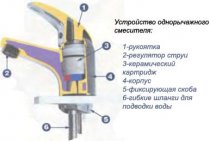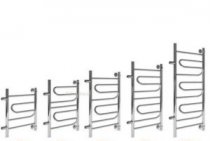Wiring diagrams
Before you install a heating radiator yourself, decide on the method of connecting it to the network. The most commonly used schemes are:
- Lateral (one-sided) scheme for installing heating radiators, in which the pipe supplying the hot coolant is connected to the upper pipe of the heater. The outlet pipe is connected to the lower one. This ensures high heat transfer. When connected on the contrary, when the supply pipe is connected from below, and the outlet pipe is connected from above, heat transfer is significantly reduced. Such a connection in a one-pipe system requires the installation of a jumper that facilitates the operation of the system.
- The second, diagonal connection of the heating radiator is as follows. The pipe supplying the hot coolant is connected to the upper branch pipe of the battery, and the "return" is connected below, on the opposite side of the heating device. Such a connection is advisable if the battery is long and has a large number of sections. Diagonal design guarantees maximum heat transfer. But if the supply pipe is connected from below, and the outlet pipe is connected from above, the heat transfer will decrease by 6-10%.
- The last method - bottom connection of heating radiators - is used when the consumer wants to hide the heating pipes in the wall, in the floor or near its surface. With it, the direct and return pipes are connected from the bottom of the radiator, but from different sides. Such a connection scheme (otherwise called "Leningrad") is characterized by aesthetics, as well as low heat transfer. Heat loss is up to 15%.
You can ask the experts how much it costs to install a heating radiator, and, possibly, agree to their services. Experienced craftsmen will tell you which connection scheme to choose, and what auxiliary elements will be needed for installation.
To do this, first the coolant is drained from one radiator, which changes if it can be localized by closing the valves at the inlet; or from the entire one-pipe system. When performing work in an apartment building, you should contact the housing office so that its employees drain the water from the riser where the replacement is being carried out. After that, you can remove the old radiator.
To install a heating radiator yourself, you first need to install shut-off and control equipment on it.
After installation, the connections need to be crimped.
Having familiarized yourself with how to properly install heating radiators, it is worth considering whether you need to do this work yourself. If you do not have the skills to install heating appliances, it is better to hire professionals, having previously found out the prices for installing heating radiators in the locality where they will be installed.
From all of the above, it follows that the installation of heating batteries can be quite simple if you initially prepare well for it and study all the instructions that come with the device. After performing all the procedures in the prescribed sequence, the heating system will be durable and will last for decades.
- How to pour water into an open and closed heating system?
- Popular Russian-made outdoor gas boiler
- How to correctly bleed air from a heating radiator?
- Expansion tank for closed heating: device and principle of operation
- Gas double-circuit wall-mounted boiler Navien: error codes in case of malfunction
Recommended reading
2016–2017 — Leading heating portal. All rights reserved and protected by law
Copying site materials is prohibited. Any copyright infringement entails legal liability. Contacts
Recommendations for the installation of electric heating
If you are doing electric heating in your home for the first time, it will be useful to know some of the features:
- all work must be performed with the electricity turned off;
- an air vent must be installed on each radiator - this will help you get rid of air pockets during operation;
- expansion tank - the highest point of the system, usually installed in the attic or above the boiler;
- since an electric boiler cannot do without electricity, it would be good to get a generator in case of an unforeseen power outage, it is especially necessary in those houses where there are frequent blackouts;
- before the first start, you need to power the system and check the connections for leaks; after that, you can connect all electrical appliances.
In general, the electric heating system is quite easy to install and use and is a good choice for country houses.
from 2000
Installation of the heating system in the house.
In a private house, it is advisable to think over the heating system in advance, even at the stages of designing and building a house. When installing a boiler room, as well as when distributing a heating system, this can bring significant benefits to you.
It is possible to provide in advance a variety of technical niches intended for collectors, risers, it is desirable to use a separate room for the boiler room. It is possible to find a way out of any situation with minimal losses thanks to modern technologies. This is beneficial provided that the house has already been built.
To start work on the installation of heating systems in the house, an important condition must be met - windows must be installed in the house, and a roof must also be arranged. In the modern world, heating pipes must be laid with hidden wiring, that is, in special strobes or in the floor
It is desirable to carry out pipes along the floor in a screed. If this is not possible, pipes can be laid directly in the walls. Very often, wall lining is used in houses on the second floor, where most often the floor is wooden.
Installation of heating in the country should be carried out until the moment when the screed is poured, the walls should already be plastered. Radiators should be hung before the plaster, as often the radiators have to be leveled, and for this you will have to pick up the plaster and correct the conclusions. Many owners of private houses use heating installation, which is carried out in two stages: at the first stage, pipe outlets are carried out with a margin, at the second stage, plaster is made, radiators are hung and connected. This method of installation takes much more time.
To obtain maximum accuracy, it is desirable to use a certain technology. First, hang the radiators, the film from the radiators should not be removed, it must remain in place until the heating system is started. When making conclusions to the radiators from the walls, it is necessary to outline the boundaries of the strobe in advance, only after that it is necessary to remove the radiators and gouge. After the complete preparation of the gates, you need to hang the radiators, make a complete wiring of the heating pipes, connect them to the radiators.
Then, using alabaster or a special solution, fix the wiring at the exit points from the walls. Radiators can be removed after these solutions have completely dried. One important recommendation must be followed - radiators should be stored as far as possible from finishing work. Radiators must not be left at the repair site, as the film will not be able to protect them from damage and dirt.
Hidden wiring can be done even after finishing work is completed. Pipes can be carried along the walls in a special box. This method is called "plinth wiring". Many Western pipe manufacturers already immediately offer a ready-made plinth wiring system, where absolutely all components and materials are thought out.But you can do all this on your own. To do this, it will be enough to use a plastic box, reminiscent of the one used for electrical wires.
It is desirable to carry out tee wiring of pipes only along the walls, but at the same time you need to retreat about fifteen centimeters. In order to properly drain the system, slopes towards the taps were previously used. In modern systems, this method is completely optional.
The only condition for laying pipes is that there are no air pockets. If this condition cannot be met, then an automatic air vent will need to be installed at the top point.
A bit of theory
Without going into the complexity of physical processes, we will simply try to describe any heating system.
It looks like a vicious circle of highways along which the coolant moves. Usually it is water, less often special liquids or steam. Accordingly, the system has:
- a device that heats water at the beginning of a cycle
- pipeline through which the coolant moves
- devices that transfer heat from the system to heated rooms
Giving off heat due to heat transfer and thus cooling down, the coolant returns back to the heater. Here it is heated up again, and the whole cycle is repeated. And so many times.
Wood, coal, peat, gas, fuel oil and more can be used as fuel.
Choosing a heating system for your home
The issue of choosing a heating system was determined initially. You can, of course, practice eloquence about creating energy-saving systems that are fashionable today, solar panels, wind generators, or something else. But if you are serious about creating a working system with your own hands that gives enough heat for your home, then you need to discard your fantasies and get to work.
The main and most affordable type of fuel is gas, which is both cheaper and more efficient than others. Therefore - if there is gas, you need to unambiguously choose a heating system that runs on this fuel. If not, then you have to think about other options.
In fact, all modern systems are similar to each other and differ only in the type of fuel, coolant, method of laying lines and the type of connection of heating devices. And, of course, we will talk about an autonomous system that is not connected with centralized communications (city, from the boiler room, and others).
And one more detail. You need to decide whether you will only heat the premises, or you still need hot water supply. In the first case, a single-circuit boiler is needed, in the second, a double-circuit boiler.
Consider an autonomous water heating system with a double-circuit boiler operating on natural gas.
The device of warm water floors
Underfloor heating allows you to evenly distribute heat energy and achieve significant savings. Click to enlarge.
Water floor heating involves the use of a heated coolant as the main source of thermal energy, which heats the room by passing through pipes laid in the floor.
Warm water floors are most often found in country houses. This situation has arisen due to a number of good reasons.
Firstly, in an apartment connected to a central heating system, it is forbidden to install underfloor heating because of the threat of increasing hydraulic resistance.
Secondly, you should not connect to the pipelines of the hot water supply system, since the water, after passing through the underfloor heating system, returns to the common hot water supply already cooled.
Thus, in a city apartment it is most advisable to use an electric floor heating, and in a country house - water. Water heating underfloor heating should only be used in insulated buildings and premises.
It is not necessary to carry out preliminary waterproofing work (most component manufacturers do not insist on carrying out this procedure).
Varieties of water floors
Water heating, mounted under the floor, can have the following varieties:
- Concrete.
- Flat.
The first option involves laying a water floor with a concrete screed, the second - without laying a screed.
The decking floors can be laid on aluminum plates through a polystyrene insert (polystyrene system) or on a wooden subfloor or logs (wooden system).
In this article, we will dwell in detail on the sequence of installation of a concrete water floor, since it was he who received the greatest distribution and popularity.
Typical composition of a water heating system
Almost any heating system that incorporates a warm floor (water) is represented by the following main elements:
- Polymer or metal-polymer pipelines.
- Thermal insulation materials.
- Circulation pump.
- Shut-off valves (ball valves) and control valves (control valves).
- Collectors, fittings and fasteners.
The heating system, which performs an auxiliary function, can not only be mounted with your own hands, but also provides for an independent preliminary calculation.
Composition of the heating system. Click to enlarge.
In the case when the main source of heat is heating, represented exclusively by one water-heated floor, it is recommended to order the development of a design solution from specialized specialists.
Types of heating systems
The level of heat supply directly depends on the type of heating system in an apartment or house. According to the pipe connection scheme, 3 types of systems can be distinguished: one-pipe, two-pipe system and using a collector.
Two-pipe system
A two-pipe heating system involves the flow of hot coolant to each radiator separately (parallel connection), one pipe at a time. Thus, they all warm up to the same temperature. And the cooled liquid enters a separate return pipe and moves to the boiler for reheating. In this case, the rules for installing heating radiators are simplified. Indeed, for replacement, it is possible to disconnect only one old radiator from the system.
Some Conclusions
The main conclusion from all of the above is that a do-it-yourself heating system for a private house is quite a feasible task. To solve it, you just need to remember that:
- To implement the plan, it is required to comply with the rules for the work established by the norms. First of all, this concerns the project and various calculations.
- If there is a project, it is very easy to select the necessary equipment, and it is much easier and more efficient to carry out the work.
- The quality of work directly depends on compliance with technology. If you want to do everything yourself, it will take some time to study.
- Each stage of work should end with a check of the tightness and operability of the system.
- When carrying out concealed work, connections and pipelines should not be covered with finishing materials without checking them under pressure.
And finally. It is unlikely that you will be able to delve into such a question in a couple of evenings, lying on the couch. But a gradual and systematic study of the installation of a heating system is up to everyone.
Each of us tries to create the most convenient and comfortable environment in the house. After all, the house is the place where we return after a hard and stressful working day, the place where relatives and friends are waiting for us. But to imagine comfort without heat in the house is very problematic.That is why the installation of heating in a private house, which our company offers, is such a relevant and popular service that allows you to create a really warm and cozy atmosphere.
